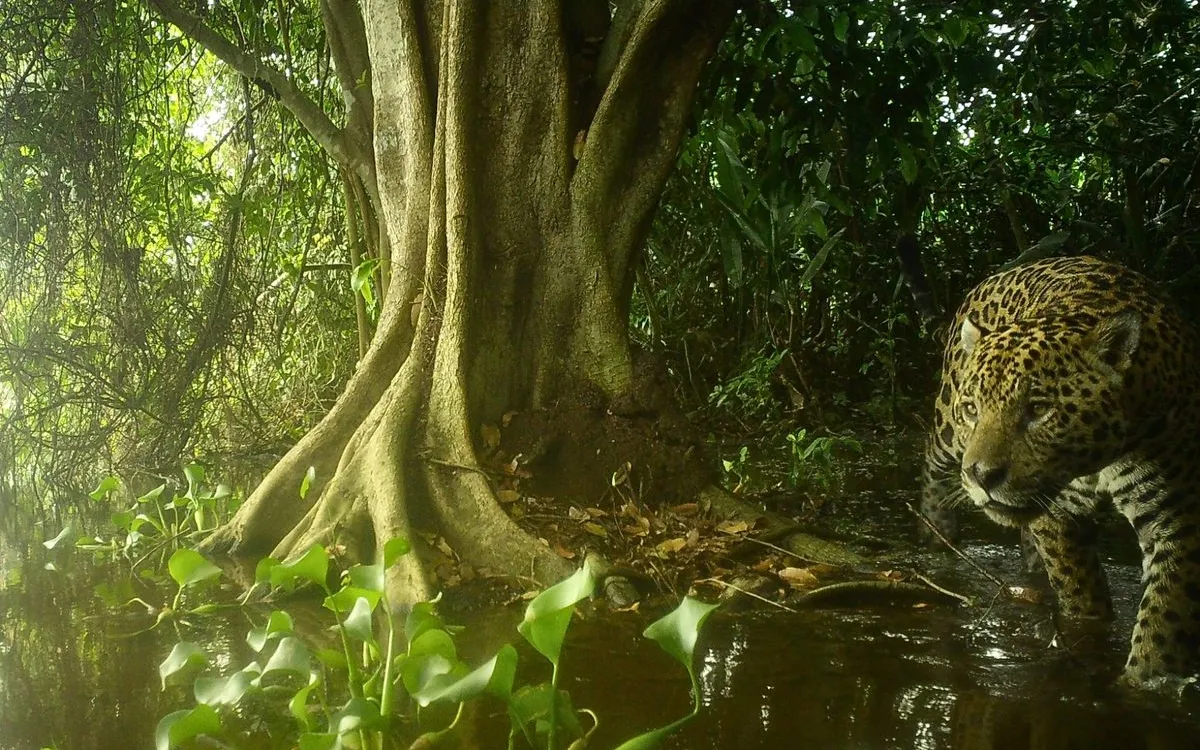
In 2020, a devastating wildfire swept through the Brazilian Pantanal, recognized as the largest tropical wetland area in the world. This catastrophic event was fueled by extreme drought, soaring temperatures, and various human activities, resulting in the destruction of over 44,515 km² of vital habitat. The aftermath of the blaze was grim, leading to the loss of an estimated 17 million vertebrates. However, a recent study published in Global Change Biology has unveiled an unexpected response from one of the Pantanal’s apex predators: the jaguar.
Researchers from Oregon State University and Brazil discovered that instead of fleeing the wildfire, these magnificent big cats migrated towards the affected areas. This surprising behavior suggests that the Pantanal wetlands are functioning as a climate refuge, enabling wildlife to endure increasingly frequent extreme weather events. The study sheds light on how jaguars adapt to environmental changes and emphasizes the wetlands' role in supporting biodiversity.
The research team, who have been studying jaguars in a 148.5 km² area of the northern Pantanal since 2014, sought to determine the wildfire's impact on the habitat use and population of these majestic creatures. To achieve this, they analyzed video footage collected from field cameras deployed before, during, and after the wildfire. Additionally, they conducted a genetic analysis of 175 jaguar scats to gain further insights into their behavior and population dynamics.
The findings revealed a temporary decline in jaguar activity immediately following the fire; however, numbers rebounded rapidly. Within one year, new cubs were born, and many new jaguars joined the population. Interestingly, resident jaguars were frequently observed both before and after the fire, indicating that they remained in the area and successfully survived the disaster.
Another key discovery from the study was that the jaguars continued to hunt primarily aquatic prey, such as fish and caiman, despite the increase in the number and diversity of other mammals in the region. This dietary preference is significant as it may alleviate pressure on terrestrial mammals and contribute to higher overall biodiversity. According to Charlotte Eriksson, a post-doctoral scholar at Oregon State University, the presence of these large carnivores is unmistakable in the area. “One of my cameras recorded a jaguar just seven minutes after I set it up,” she noted.
The study’s findings underscore the value of the Brazilian Pantanal as a climate refuge, highlighting its potential to mitigate the effects of extreme climate events. However, the researchers caution against generalizing these patterns to other regions. They stress the critical need for protecting such unique habitats and enhancing fire management strategies throughout the area to ensure the survival of its diverse wildlife.
As we continue to witness the impacts of climate change, understanding how ecosystems like the Pantanal can serve as sanctuaries for wildlife is crucial. These findings not only contribute to our knowledge of jaguar behavior but also emphasize the importance of conservation efforts in preserving these vital habitats for future generations.